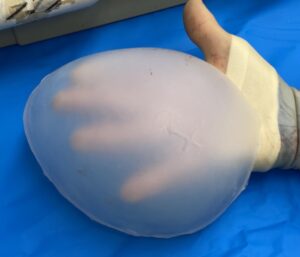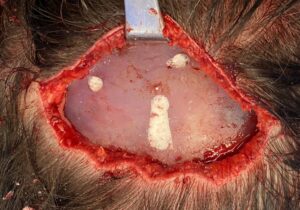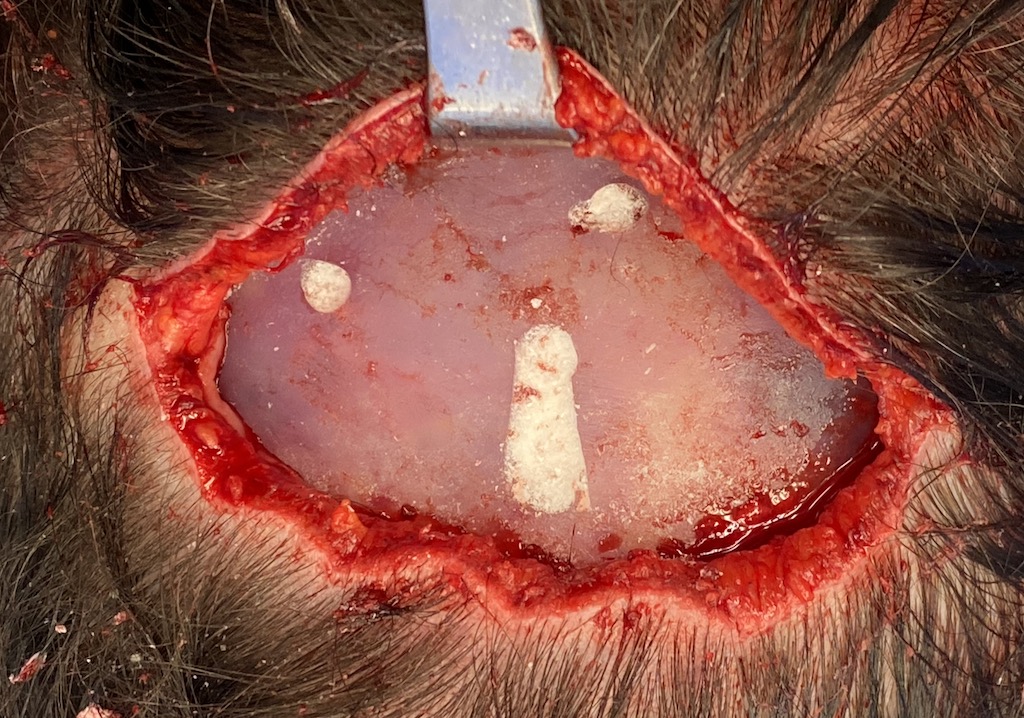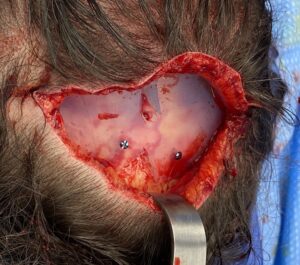Custom skull implants have proven to be the superior method for any form of aesthetic skull augmentation. Being able to preoperatively design an implant based on the patient’s 3D CT scan providesthe best chance to achieve a smooth and an effective augmentation result. The preformed implant also allows the smallest possible scalp incision and scar outcome to be used for its placement.

Besides allowing for fibrovascular ingrowth to occur through the implant they also serve to assure implant position stability. While tiny microscrews may hold the implant in place early on,4 these many perfusions also serve to lock the implant into place…like having many tony screws placed all over the implant.

The fate of the antibiotic in these skull implant wells is one of diffusion in the early postoperative period. They undoubtably turn into a liquid mixture once contained inside a closed wound when exposed to a moist environment. They then bath the implant in this antibiotic solution until it is absorbed. How long that process takes to occur is not known but I suspect some antibiotic levels remain around implant for 7 to 10 days after surgery.
Dr. Barry Eppley
Indianapolis, Indiana




